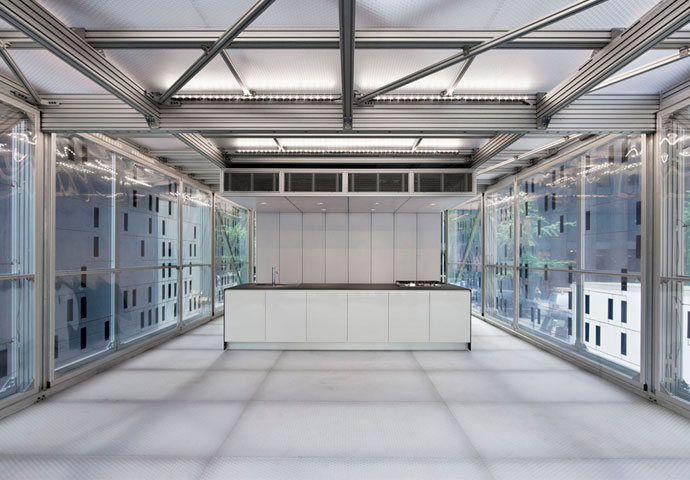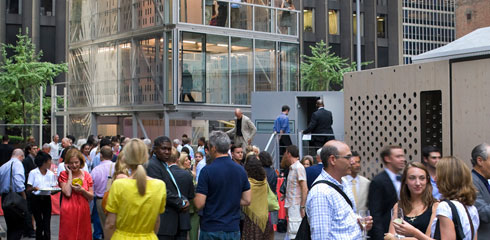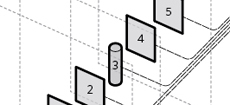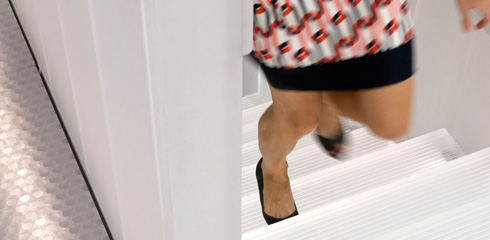Cellophane House™ Featured in Wired
Visitors inspect the Cellophane House™ kitchen at the Home Delivery Exhibit.
© Peter Aaron/OTTO
In a review of Cellophane House™ at MoMA, Andrew Blum of Wired says that “prefab's time has finally come.”
Instant Suburb of Prefabs Hits New York
By Andrew Blum
Tourists press up against the construction fence on the corner of 53rd and Sixth, staring speechless as a giant crane lifts an entire bathroom into the air and deposits it in what will be a master bedroom. Cellophane House™ is five stories tall, with floor-to-ceiling windows, translucent polycarbonate steps embedded with LEDs, and exterior walls made of NextGen SmartWrap™, an experimental plastic laminated with photovoltaic cells. Its aluminum frame was cut from off-the-shelf components in Europe, assembled in New Jersey, then snapped together in 16 days on a vacant lot next to the Museum of Modern Art — joining four other full-size houses onsite through October as part of the exhibit Home Delivery: Fabricating the Modern Dwelling. It looks as if a suburban cul-de-sac took a wrong turn at the Holland Tunnel.
Frank Lloyd Wright, Buckminster Fuller, and Charles and Ray Eames each had compelling concepts of housing for all, most of which turned out to be housing for a few. Modernist masters Walter Gropius and Le Corbusier were among hundreds who patented replicable designs that never materialized. Thomas Edison eked out a hundred units using his "single-pour concrete system"— which formed whole houses, down to the bathtub, from a single mold — before his company folded. Prefab's only success stories have been far from museum-quality: Sears, Roebuck sold more than 100,000 kit houses between 1908 and 1940, and the steel half-moons of World War II's Quonset huts stubbornly squat on military bases everywhere. (To say nothing of the nearly 100,000 "manufactured" — i.e., mobile — homes shipped last year.)
At least we can now observe prefab's evolution in years, rather than decades. Twenty-two months ago, I stood near Chesapeake Bay watching a precursor to Cellophane House™ being screwed into place ("Plug+Play Construction," issue 15.01). Dubbed "Loblolly" by its Philadelphia-based architects,KieranTimberlake, it had an aluminum scaffolding system, but back then the firm's engineer believed its strength would max out at two floors. For MoMA, the structure has been reconfigured to support five. "A lot of architects think everything's gotta be new and advanced, and they leave stuff behind," partner James Timberlake says. "We keep refining." Cellophane is more prototype than production model, but simpler KieranTimberlake houses are available from manufacturer LivingHomes (starting at $219,300).
Continue reading








